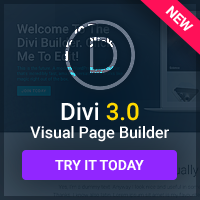Most of the visitors to your website are going to spend 99% of their time doing one thing: reading your content. Given that the web is a medium mainly devoted to reading, it's surprising just how ignorant most page authors are about typography. If you use the wrong font, you make your page painful to read – or even impossible.
The right one can make your readers stick around for much longer, and read more than they otherwise would have. But how can you know what to pick?
The Problem.
The web has a big font problem that you might not know about. The problem is this: you can only specify fonts by name in HTML and CSS. That means that, apart from logos (which can be done as images), you're relying on the people visiting your site to have installed the fonts you're using for headings and body text. Most people aren't designers, and so will only have the basic fonts that come with their operating system – and, worse, they don't even all use the same operating system!
What you end up having to do, then, is providing an order of preference: what this usually comes down to is a list of similar fonts, with your favourite first. The list will then end with either ‘serif' or ‘sans', depending on whether the font had serifs (that is, the extra little parts of the letters, like a little kick after a small d, for example). ‘Sans' is short for ‘sans-serif', meaning that the font has no serifs.
So what are the ‘web-safe fonts'? In practice, there aren't that many at all: you're pretty much limited between choosing either Georgia/Times New Roman/Serif, or Verdana/Arial/Sans. As a general rule, it's better to use sans-serif fonts on the screen, and serif fonts in print-outs: serif fonts are difficult to read on a monitor because they're hard to represent in pixels, while sans-serif fonts have a tendency to look ‘chunky' when printed.
Some Other Choices.
There are a few other fonts that most users have installed and that might be useful to you, although not for body text. These include Courier New (a typewriter-like font), Trebuchet (an interesting font for headings), Impact (a tabloid newspaper-like font) and Webdings (a set of images with things like fast forward and rewind symbols, a tick and a cross, and so on).
Pay Attention to Size.
Having read that, you might be off now to go and set your web page in Verdana, but wait a second. Verdana looks terrible in larger sizes – it's just too wide and large. You need to set it to around 80% of its default size before it's really tolerable. This also means that Verdana is largely bad in headlines – you might try Arial instead for this, preferably in bold. An ideal combination for many sites is large Arial for headlines with small Verdana for body text.
However, you should also make sure that you don't make your fonts too small, as older users or others with bad eyesight may have trouble reading them. Always specify font sizes in relative units (such as percentages), not absolute units (such as pixels). This will make sure that your font sizes pay attention to the preferences the user has set in their browser: if they've asked for very large fonts, they'll get very large fonts. Never forget that it's ultimately up to your users how they want to see your site, and you have to respect this.
Avoid Comic Sans.
Finally, it's worth adding a special mention here for a font that is a hate object for designers everywhere: Comic Sans. It's a font that you've no doubt seen, with its trademark child's handwriting-like letters. It was designed to have a ‘playful' look, but the use of it has just got out of hand – if you've ever tried to read a whole web page in Comic Sans, you'll know the pain I speak of. In a design sense, using it is a faux pas right up there with misplacing all your apostrophes. Read more at www.bancomicsans.com.


